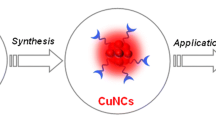Abstract
Peptide hormones perform important biological functions by binding specific cell membrane receptors. For hormone–receptor interaction studies, receptor-binding assays are widely used. However, conventional receptor-binding assays rely on radioactive tracers that have drawbacks. In recent studies, we established novel non-radioactive receptor-binding assays for some recombinant protein hormones based on the ultrasensitive bioluminescence of a newly developed nanoluciferase (NanoLuc) reporter. In the present work, we extended the novel bioluminescent receptor-binding assay to peptide hormones that have small size and can be conveniently prepared by chemical synthesis. Human ghrelin, a 28-amino acid peptide hormone carrying a special O-fatty acid modification, was used as a model. To prepare a bioluminescent ghrelin tracer, a chemically synthesized ghrelin analog with a unique cysteine residue at the C-terminus was site-specifically conjugated with an engineered NanoLuc with a unique exposed cysteine residue at the C-terminus via a reversible disulfide linkage. The NanoLuc-conjugated ghrelin retained high binding affinity with the ghrelin receptor GHSR1a (K d = 1.14 ± 0.13 nM, n = 3) and was able to sensitively monitor the receptor-binding of various GHSR1a ligands. The novel bioluminescent receptor-binding assay will facilitate the interaction studies of ghrelin with its receptor. We also proposed general procedures for convenient conjugation of other peptide hormones with NanoLuc for novel bioluminescent receptor-binding assays.



Similar content being viewed by others
References
Bednarek MA, Feighner SD, Pong SS, McKee KK, Hreniuk DL, Silva MV, Warren VA, Howard AD, Van Der Ploeg LH, Heck JV (2000) Structure-function studies on the new growth hormone-releasing peptide, ghrelin: minimal sequence of ghrelin necessary for activation of growth hormone secretagogue receptor 1a. J Med Chem 43:4370–4376
Delporte C (2013) Structure and physiological actions of ghrelin. Scientifica (Cairo) 2013:518909
Gahete MD, Rincón-Fernández D, Villa-Osaba A, Hormaechea-Agulla D, Ibáñez-Costa A, Martínez-Fuentes AJ, Gracia-Navarro F, Castaño JP, Luque RM (2013) Ghrelin gene products, receptors, and GOAT enzyme: biological and pathophysiological insight. J Endocrinol 220:R1–R24
Hall MP, Unch J, Binkowski BF, Valley MP, Butler BL, Wood MG, Otto P, Zimmerman K, Vidugiris G, Machleidt T, Robers MB, Benink HA, Eggers CT, Slater MR, Meisenheimer PL, Klaubert DH, Fan F, Encell LP, Wood KV (2012) Engineered luciferase reporter from a deep sea shrimp utilizing a novel imidazopyrazinone substrate. ACS Chem Biol 7:1848–1857
He SX, Song G, Shi JP, Guo YQ, Guo ZY (2014) Nanoluciferase as a novel quantitative protein fusion tag: application for overexpression and bioluminescent receptor-binding assays of human leukemia inhibitory factor. Biochimie 106:140–148
Heppner KM, Tong J (2014) Mechanisms in endocrinology: regulation of glucose metabolism by the ghrelin system: multiple players and multiple actions. Eur J Endocrinol 171:R21–R32
Howard AD, Feighner SD, Cully DF, Arena JP, Liberator PA, Rosenblum CI, Hamelin M, Hreniuk DL, Palyha OC, Anderson J, Paress PS, Diaz C, Chou M, Liu KK, McKee KK, Pong SS, Chaung LY, Elbrecht A, Dashkevicz M, Heavens R, Rigby M, Sirinathsinghji DJ, Dean DC, Melillo DG, Patchett AA, Nargund R, Griffin PR, DeMartino JA, Gupta SK, Schaeffer JM, Smith RG, Van der Ploeg LH (1996) A receptor in pituitary and hypothalamus that functions in growth hormone release. Science 273:974–977
Katugampola SD, Pallikaros Z, Davenport AP (2001) [125I-His(9)]-ghrelin, a novel radioligand for localizing GHS orphan receptors in human and rat tissue: up-regulation of receptors with athersclerosis. Br J Pharmacol 134:143–149
Kojima M, Hosoda H, Date Y, Nakazato M, Matsuo H, Kangawa K (1999) Ghrelin is a growth-hormone-releasing acylated peptide from stomach. Nature 402:656–660
Labarthe A, Fiquet O, Hassouna R, Zizzari P, Lanfumey L, Ramoz N, Grouselle D, Epelbaum J, Tolle V (2014) Ghrelin-derived peptides: a link between appetite/reward, GH Axis, and psychiatric disorders? Front Endocrinol (Lausanne) 5:163
Matsumoto M, Hosoda H, Kitajima Y, Morozumi N, Minamitake Y, Tanaka S, Matsuo H, Kojima M, Hayashi Y, Kangawa K (2001) Structure-activity relationship of ghrelin: pharmacological study of ghrelin peptides. Biochem Biophys Res Commun 287:142–146
Muccioli G, Papotti M, Locatelli V, Ghigo E, Deghenghi R (2001) Binding of 125I-labeled ghrelin to membranes from human hypothalamus and pituitary gland. J Endocrinol Invest 24:RC7–RC9
Pradhan G, Samson SL, Sun Y (2013) Ghrelin: much more than a hunger hormone. Curr Opin Clin Nutr Metab Care 16:619–624
Rak-Mardyla A (2013) Ghrelin role in hypothalamus-pituitary-ovarian axis. J Physiol Pharmacol 64:695–704
Zhang L, Song G, Xu T, Wu QP, Shao XX, Liu YL, Xu ZG, Guo ZY (2013) A novel ultrasensitive bioluminescent receptor-binding assay of INSL3 through chemical conjugation with nanoluciferase. Biochimie 95:2454–2459
Acknowledgments
We thank Promega Corporation for providing the plasmids encoding NanoLuc. This work was supported by the National Natural Science Foundation of China (31470767, 31270824) and the Fundamental Research Funds for the Central Universities (2000219098).
Conflict of interest
The authors declared that they have no conflict of interest.
Author information
Authors and Affiliations
Corresponding author
Additional information
Handling Editor: D. Tsikas.
Electronic supplementary material
Below is the link to the electronic supplementary material.
Rights and permissions
About this article
Cite this article
Liu, Y., Shao, XX., Zhang, L. et al. Novel bioluminescent receptor-binding assays for peptide hormones: using ghrelin as a model. Amino Acids 47, 2237–2243 (2015). https://doi.org/10.1007/s00726-015-2009-y
Received:
Accepted:
Published:
Issue Date:
DOI: https://doi.org/10.1007/s00726-015-2009-y




